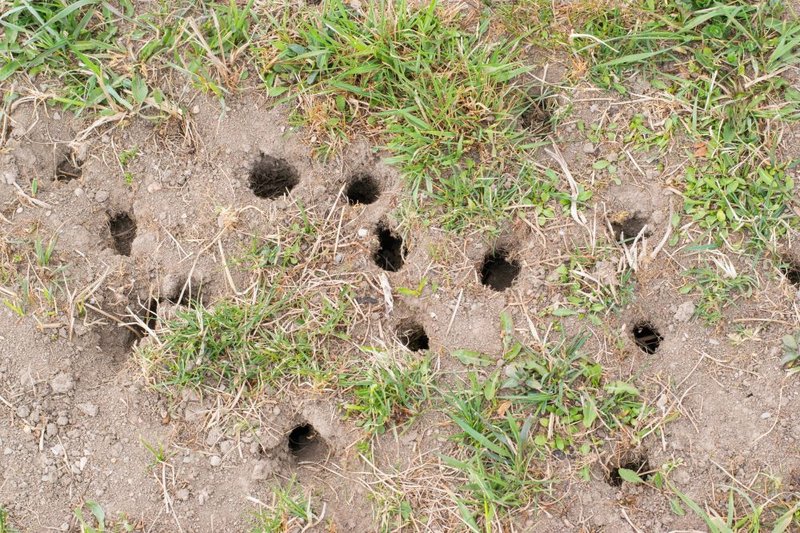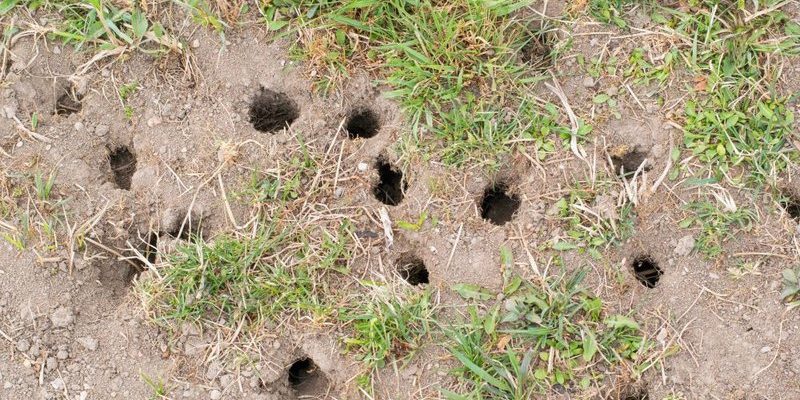
Bobbit worms are fascinating creatures that can grow quite large, often making their burrows pretty distinct. But let’s not jump too far ahead. The key to identifying Bobbit worm holes lies in understanding their structure and comparing them to other common burrows. So, let’s dive in and explore how you can differentiate these underwater entrances.
Understanding Bobbit Worms and Their Burrows
Bobbit worms, part of the family Eunicidae, are colorful and elongated marine worms known for their impressive predatory skills. They can be found in various ocean environments, burrowing into the sand or mud. The burrows they create are often smooth-walled and can be several feet deep. One of the most iconic features is their size; Bobbit worms can reach lengths of up to 10 feet or more!
To really grasp the distinction, picture this: Imagine a fancy restaurant’s entrance—bright, polished, and noteworthy. In the ocean, the Bobbit worm’s burrow can feel similar in that it’s not just any hole; it has a unique flair. Apart from its depth, the entrance is usually relatively narrow, often between the size of a pencil and a finger. This structure allows them to hide and ambush their prey, making them efficient hunters.
Common Characteristics of Bobbit Worm Holes
So, how do you spot a Bobbit worm hole? Here are some telltale signs you can look for:
- Size and Shape: Bobbit worm holes have a distinctive, smooth, cylindrical shape. They typically have a diameter of about 1-2 inches but can vary. If the hole looks like it was carved out neatly, you might be onto something.
- Depth: These burrows can be quite deep, often extending several feet into the substrate. If you’ve got a probe handy, you might want to check just how far down it goes.
- Location: Bobbit worms prefer sandy or muddy environments. So if you’re near rocky areas or coral reefs, chances are you’re looking at a different type of burrow.
Identifying these features can help you narrow down your search. Remember, the marine world is diverse, and other creatures have their own unique burrows. But keep an eye out for those smooth, deep cylindrical shapes!
How Bobbit Worm Holes Compare to Other Burrows
You might be wondering how Bobbit worm holes stack up against the burrows of other marine creatures. For instance, sea cucumbers often create different types of burrows. Their holes tend to be wider and less deep—more like a casual dipping pool than a hidden treasure cave.
On the other hand, crabs make burrows that are usually much larger in diameter and often have a distinct entrance with debris around them, like sand or small rocks. Their burrows are also more irregular in shape compared to the sleek design of a Bobbit worm’s home.
Here’s a quick comparison to make it clearer:
| Creature | Burrow Characteristics |
|---|---|
| Bobbit Worm | Smooth, cylindrical, 1-2 inches wide, deep |
| Sea Cucumber | Wider, less deep, more irregular |
| Crab | Large diameter, messy entrance, shallow |
By understanding these differences, you can have a more enjoyable and informed experience when exploring marine habitats.
Identifying Signs of Activity Around Bobbit Worm Holes
Another way to recognize a Bobbit worm burrow is by observing the surrounding area. Did you know that Bobbit worms are not just reclusive? They often leave signs of their presence that can guide you.
- Feeding Trenches: You might come across small feeding trenches leading away from the hole. These are caused when the Bobbit worm reaches out to grab its prey, often leaving trails in the sand.
- Leftover Prey Remnants: If you find bits of shell or leftover fish near the entrance, it could indicate the worm’s dining preferences. Bobbit worms are carnivorous and large enough to consume fish or various small marine creatures.
- Unusual Surface Ripples: If you spot tiny ripples or disturbances in the sand near the burrow, this could suggest the worm is active, perhaps retreating into its lair.
By keeping an eye out for these signs, you can confirm your suspicions about the burrow and enjoy observing the fascinating world of marine life.
Why Distinguishing Bobbit Worm Holes Matters
Understanding how to identify Bobbit worm holes isn’t just about curiosity—it’s also vital for marine ecosystems. For researchers, this knowledge helps in studying habitat preferences, feeding behaviors, and interactions with other marine species. For aquarium hobbyists, recognizing these burrows can help them manage their tanks more effectively.
If you’ve got a saltwater aquarium, you might want to ensure that a Bobbit worm doesn’t turn into an unwelcome guest. These worms can become quite large and may prey on the other inhabitants in your tank, leading to an imbalance in your carefully curated ecosystem.
So, knowing how to identify their burrows can help you make informed decisions about your aquarium setup and maintenance.
Final Thoughts on Identifying Bobbit Worm Holes
Detecting Bobbit worm holes is like being a marine sleuth. It takes a little practice, but once you know what signs to look for, you’ll start spotting these fascinating structures in no time. Understanding their unique characteristics, comparing them with other burrows, and paying attention to the clues left behind can enhance your exploration of aquatic environments.
Whether you’re a curious beachcomber or a dedicated aquarium enthusiast, knowing how to distinguish Bobbit worm holes adds an extra layer to your appreciation of marine life. So next time you’re on the hunt for these underwater mysteries, remember the signs and features we talked about. Happy exploring!

